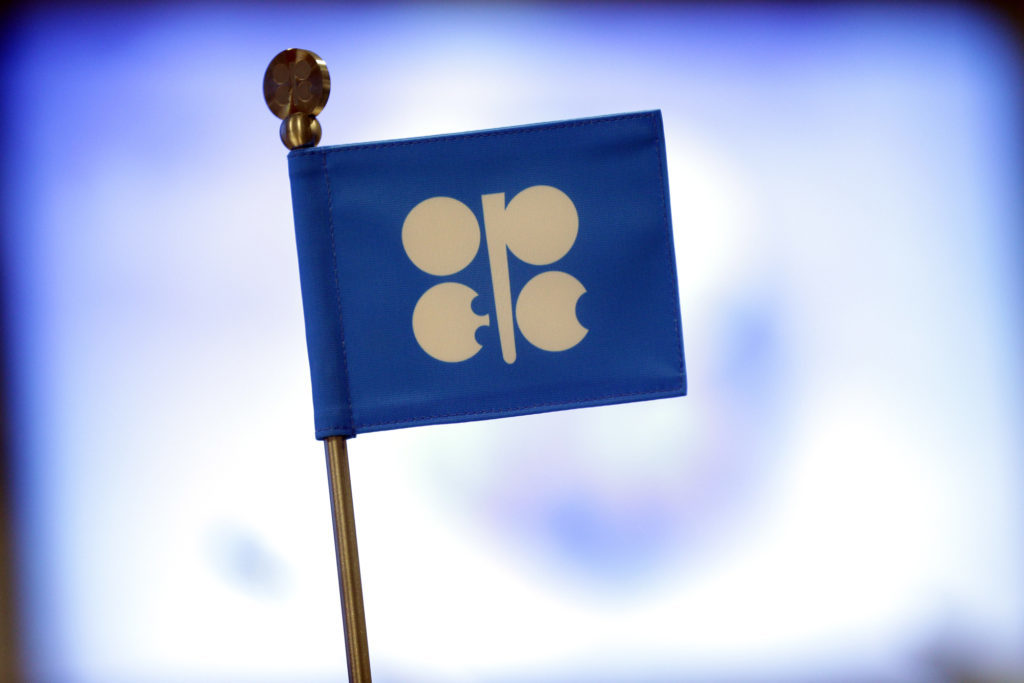
Oil is poised to post its first weekly decline in almost a month as Saudi Arabia and Russia said they’re discussing easing global output cuts while the risk of Iranian and Venezuelan supply disruptions linger.
U.S. futures were down 0.4 percent, set for a 1.2 percent drop this week. While scaling back the supply cuts that began in 2017 to shrink a market glut is “on the table,” no decision has been made, said Saudi Arabian Energy Minister Khalid Al-Falih. Meanwhile, economically fragile Venezuela said it may seek global producers’ help to boost output this year, while renewed U.S. sanctions on Iran risk curbing exports from OPEC’s third-largest producer.
Oil is trading near a 3 1/2-year high as concern about the potential supply disruptions have boosted prices further after crude rebounded from the worst crash in a generation on the back of output cuts made by the Organization of Petroleum Exporting Countries and its allies. While the rally has sparked concern that demand may falter, OPEC’s strategy is complicated by surging shale supplies in the U.S., where drillers are pumping at a record pace.
“Discussions on easing of production curbs for OPEC are now about to take off,” said Hong Sungki, a Seoul-based commodities trader at NH Investment & Securities Co. “While it’s likely that OPEC members will merely increase the lost barrels from Venezuela and Iran, prices will be corrected as expectations fade for an extended deal until the end of this year.”
West Texas Intermediate for July delivery traded at $70.44 a barrel on the New York Mercantile Exchange, down 27 cents, at 2:56 p.m. in Singapore. The contract lost 1.6 percent to $70.71 on Thursday. Prices have declined 84 cents this week. Total volume traded was about 43 percent below the 100-day average.
Brent futures for July settlement traded at $78.42 a barrel on the London-based ICE Futures Europe exchange, down 37 cents. Prices on Thursday fell $1.01, or 1.3 percent, to $78.79. The contract was 0.1 percent down this week, headed for a drop for the first time in seven weeks. The global benchmark crude traded $7.99 above WTI for the same month, after closing at the biggest premium since April 2015 on Thursday.
OPEC+ Talks
Futures for September delivery fell 1.6 percent to 477.4 yuan a barrel in afternoon trading on the Shanghai International Energy Exchange. Prices are down 1.9 percent this week. The contract rose 0.1 percent to 485 yuan on Thursday.
OPEC and its allies will discuss easing the curbs in June, Russian Energy Minister Alexander Novak said in a joint interview with Al-Falih. The two producers plan to have at least two more meetings ahead of a group gathering in Vienna next month, the Saudi minister said in the interview early Friday in St. Petersburg.
As the nations prepare to revise their historic output deal, Venezuela may seek support for increasing production by 1 million barrels a day in 2018, President Nicolas Maduro said on state television, as the country’s supplies are threatened by its worst economic downturn. Disruption is also expected in Iran’s oil industry after the U.S. decided to reimpose sanctions on the Middle East nation earlier this month.
Other oil-market news:
Exxon Mobil Corp. sees acquisitions as “few and far between” over the coming year, despite a boost in its spending budget, as rising oil prices mean sellers are demanding high buy-ins, Chief Executive Officer Darren Woods said in an interview. The rise in oil prices to $80 a barrel is starting to cause concern across boardrooms, with some big industrial consumers, including airlines and shipping companies, starting to buy more insurance against rising energy prices. Russia’s Finance Ministry said further oil-price gains don’t make sense in the face of supply risks from Iran to Venezuela and the prospect of a larger spike in U.S. shale production. Gasoline futures in New York were set for the first weekly decline since early May, and traded at $2.2234 a gallon.
Recommended for you
